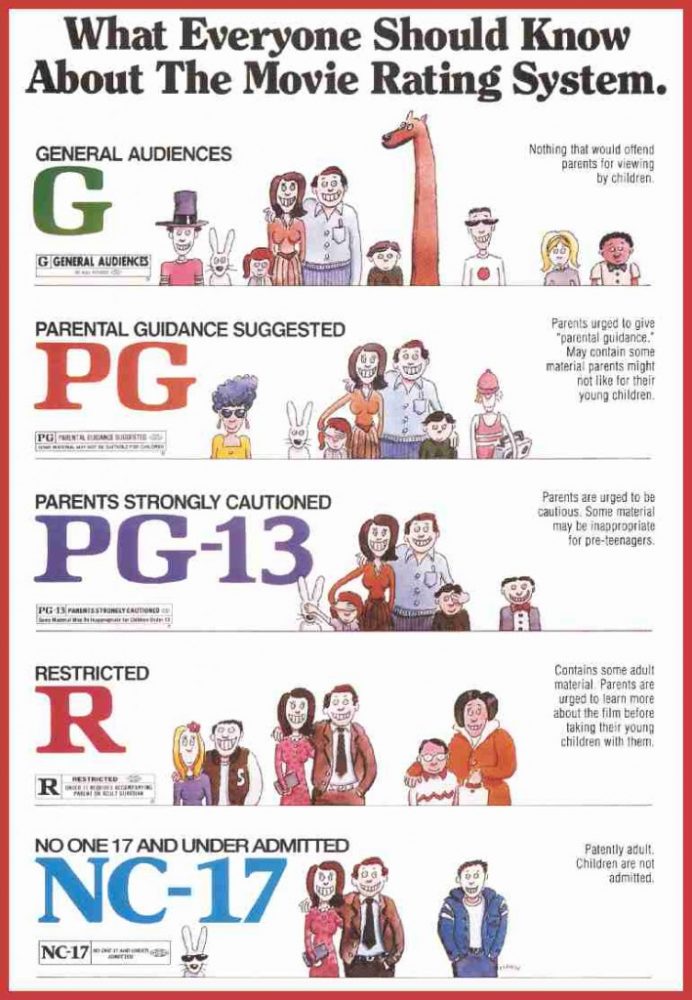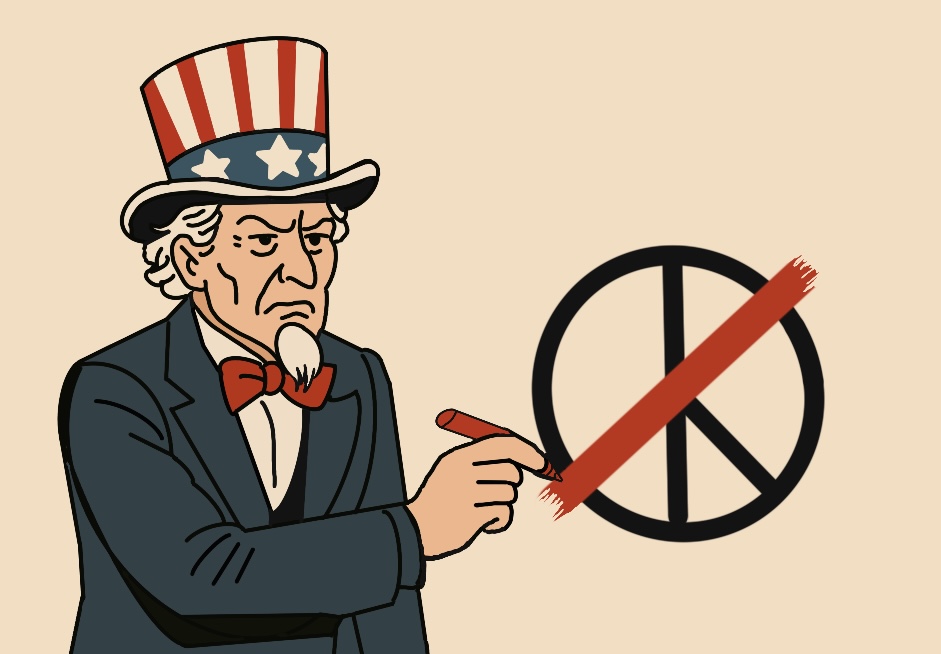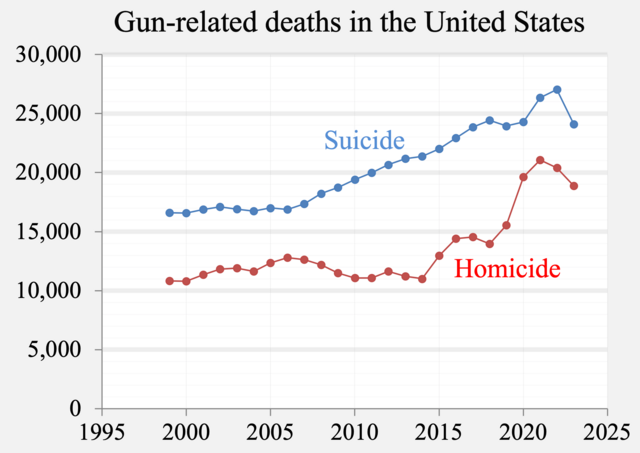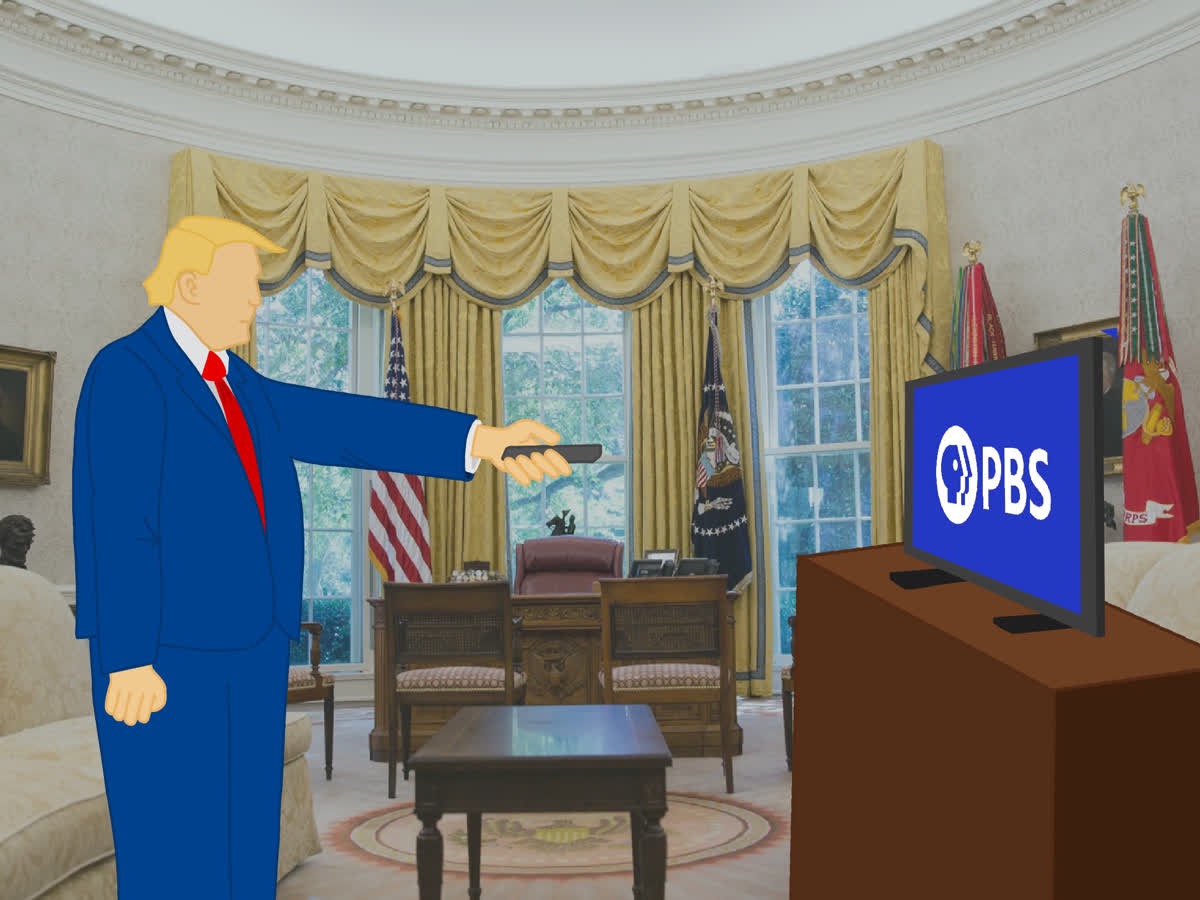In 2014, 68% of the population in the United States and Canada went to a movie theater at least once that year. Not only does this prove that the movie industry is profitable, but it is popular as well. You would think that the company behind the cinematic process and movie theatre market would be efficient in America due to the great popularity of movie theatres, but it is actually quite the opposite.
The Motion Picture Association of America (MPAA) was founded in 1922, with their rating system first being implemented in 1968. Their rating system is completely voluntary, and ratings have no legal standing. Instead, theater owners enforce the MPAA film ratings after they have been assigned. The five rankings that the rating system uses are:
| G/General Audiences | Nothing that would offend parents for viewing by children. |
| PG/Parental Guidance Suggested | Parents urged to give ‘parental guidance.’ May contain some material parents might not like for their young children. |
| PG-13/Parents Strongly Cautioned | Parents are urged to be cautious. Some material may be inappropriate for pre-teenagers.[slideshow_deploy id=’61919′] |
| R/Restricted | Contains some adult material. Parents are urged to learn more about the film before taking their young children with them. |
| NC-17/Adults Only | Clearly adult. Children are not admitted. |
Not only do these ratings cover a narrow and repetitive area without even signifying why these ratings are such, but they are an extremely purist and close-minded vice on a diverse and progressive population. Even if a parent has no problem with their child watching a film with something such as nudity or explicit language, they would have to accompany them since a theater enforces these obscure and segmented guidelines. A parent should have the final say in whether or not their child should see a movie based on what kinds of content that they are comfortable with showing their child. The MPAA’s ratings do not differentiate types of content from each other, allowing different types of sensitive material to fall into one universal ranking.
For modern cinematography which has become progressively more advanced and complex, there could be various other solutions for the MPAA rate films for their content. An extremely simple method would to only have two ratings: one where all ages would be admitted, and one where a parent must approve whether or not their child should see the movie. Another effective revision which the MPAA could utilize a vastly more complex rating system. There could be one rating for every type of content in a film and the severity of it. A movie with a large amount of violence could be rated V4 (or violence level four). These ratings could also be combined so that it encompasess all of the content which it showcases. For example, the great movie “Pulp Fiction” has plenty of violence and explicit language. For these reasons, it could receive a rating of V3-L5 (or Violence level three and language level five). This system could give people a clear and in-depth summary of what content a movie has.
The rating system which the MPAA currently uses has resulted in many flaws at both the theatre and the studio. The most recent example of one of these flaws could be the Marvel movie, “Deadpool”. The popular anti-hero has a huge following which consists of comic-fans but especially young teenagers who are too young to watch the R-rated film according to the MPAA. This flaw causes Marvel to lose a lot of profits from a huge potential audience, or it would encourage the people who are not admitted to sneak in through various methods.
If the MPAA wants to effectively set standards for what is morally correct for people to see, then their current rating system must be eliminated. There are other far more effective ways to set guidelines for whether or not a film should be viewed by anyone of any age. With film-makers producing more progressive content for an increasingly more progressive audience, it is time for a revision for the rating system of movies.













